Art World
Ancient Emojis? Archeologists Have Discovered Epic New Nazca Lines in Peru, Thanks to an Assist From A.I.
The gigantic earthworks, which date as far back as 100 BC, include drawings of animals and mysterious humanoids.
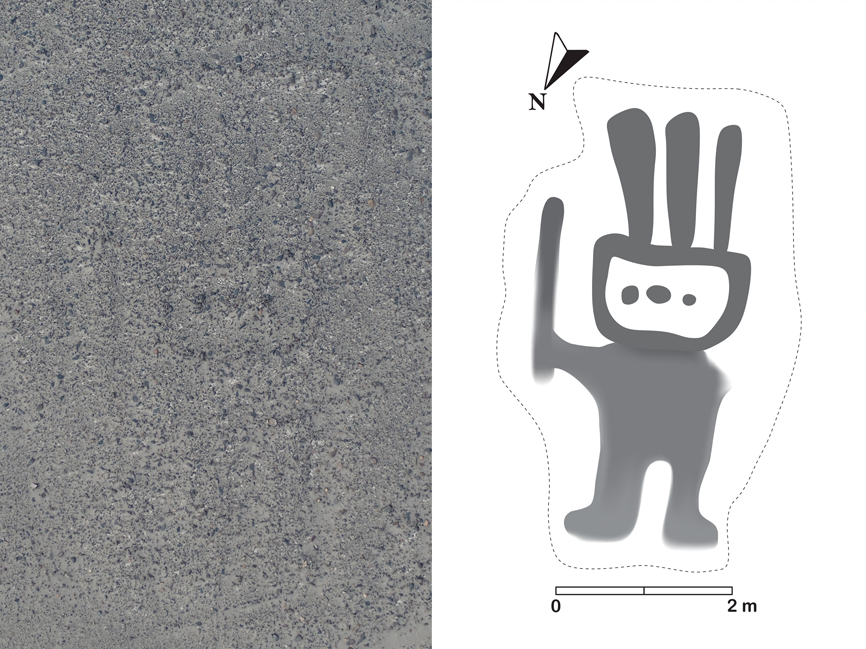
The gigantic earthworks, which date as far back as 100 BC, include drawings of animals and mysterious humanoids.

Maxwell Williams

A group of archaeologists from Japan’s Yamagata University, assisted by A.I. technology, have announced the uncovering of a new cache of giant, prehistoric Land Art made by the ancient Nazca people of Southern Peru.
An investigation of the area by the Yamagata University researchers, led by Masato Sakai in collaboration with IBM Japan, revealed 143 new geoglyphs in all belonging to an existing set of earthworks known as the Nazca Lines, a large group of biomorphic drawings that were made between 500 BC and 500 AD. The newly uncovered lines are dated from 100 BC to 300 AD.
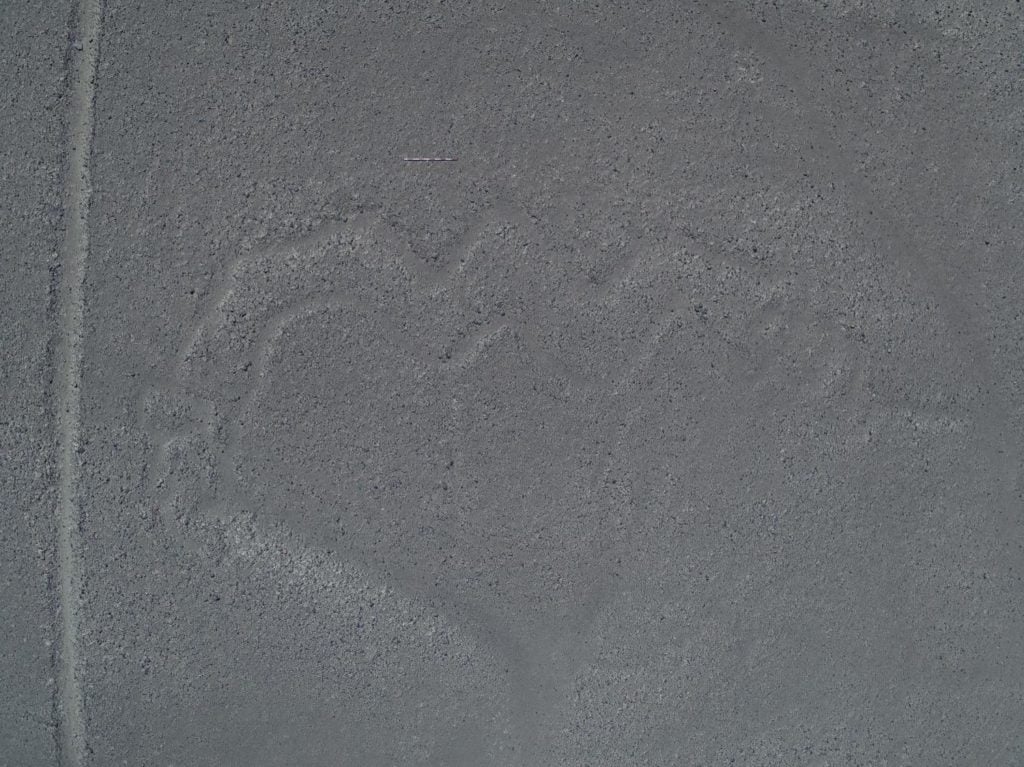
The Nazca Lines were found and analyzed with A.I. technology provided by IBM.
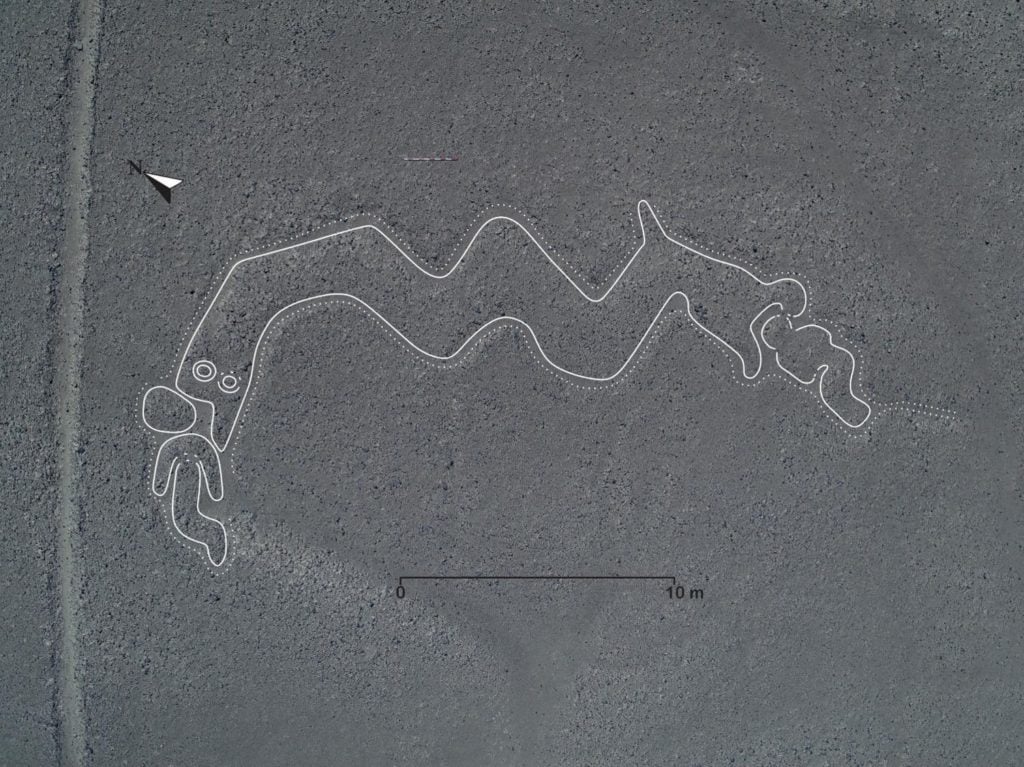
The analyzed Nazca Line depicts a two-headed snake devouring humanoids.
Among the geoglyphs studied by the Yamagata group are a two-headed snake, apparently depicted devouring two human figures; a fish figure; bird-like figure; several humanoid figures, including one with three protuberances coming from its head and carrying what looks to be a club; and a long-haired figure with what appears to be a face in its midsection.
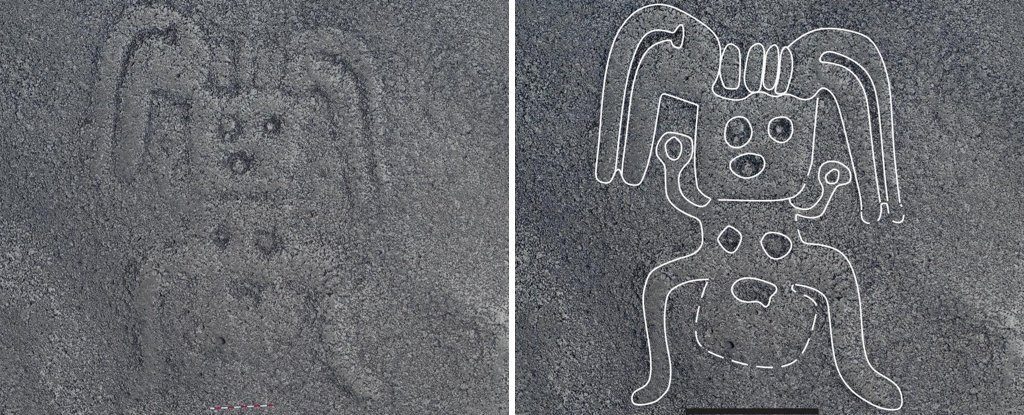
A humanoid figure with what appears to be a face in their midsection from the newly uncovered cache of Nazca Lines.
The team’s research was greatly aided by A.I. technology. The researchers were doing fieldwork, and at the same time using an A.I. server IBM Power System AC922 configured with the deep-learning platform IBM Watson Machine Learning Community Edition. This led to the uncovering of one geoglyph, which then opened up the floodgates for others.
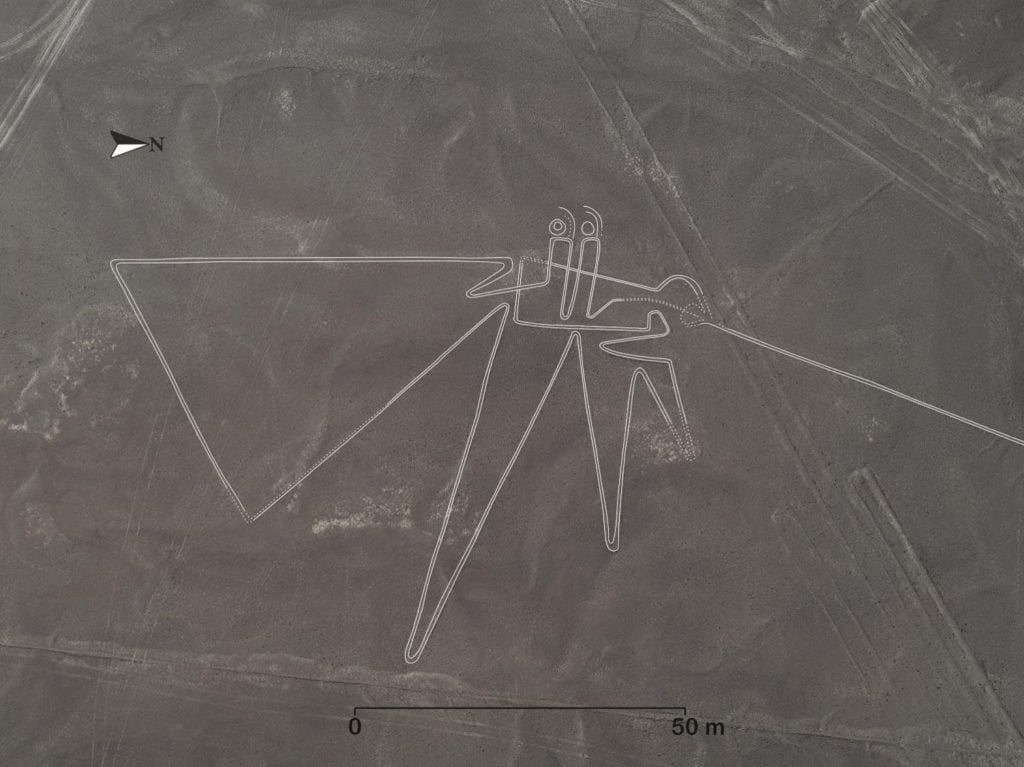
The processed image of a bird.
The giant figures and designs—which are between 16-feet and 320-feet in size—were scratched into the earth by the inhabitants of the desert coastal area about 280 miles south of Lima, in an area known as the Palpa Region. The purpose of the drawings is unclear. Some theories purport that they are representations of constellations in the night sky; others posit that the lines are part of a pilgrimage ceremony, meant to be walked across en route to a sacred place. While there’s no consensus, most theories agree that the Nazca Lines played a ritualistic role of some sort.
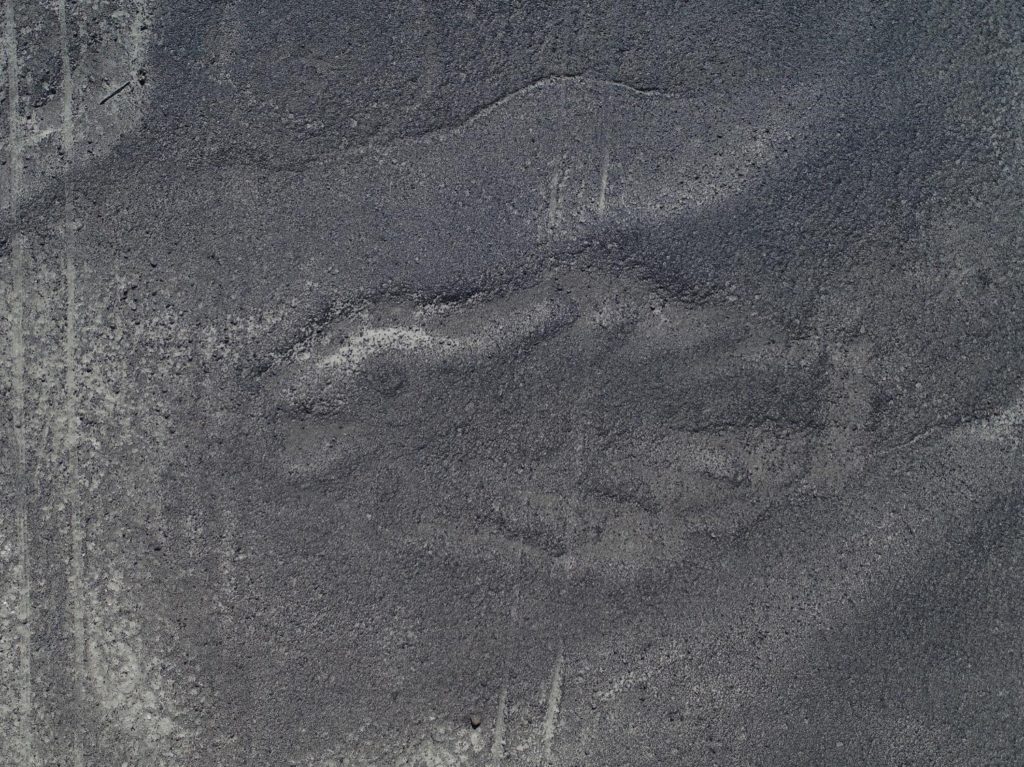
Unprocessed fish.
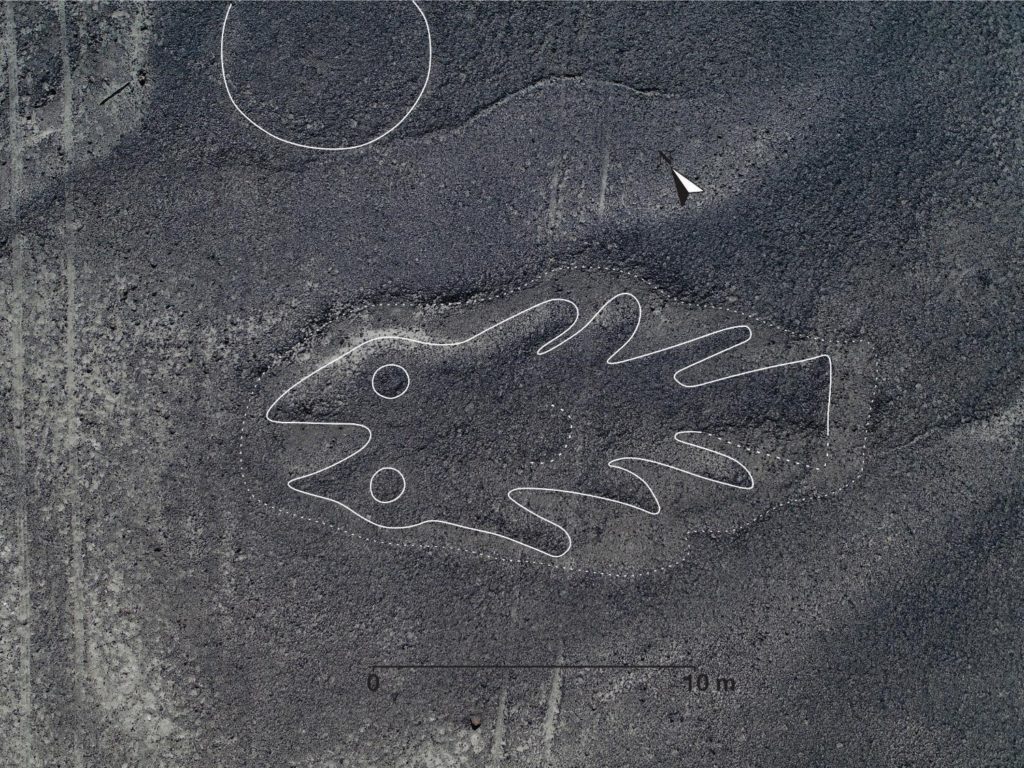
A.I.-processed fish.
The Nazca Lines were first stumbled upon in 1927 by Peruvian archaeologist Toribio Mejia Xesspe. Previously studied lines include depictions of a spider, monkeys, a killer whale, a hummingbird, lizards, and a pelican, as well as human figures, trees, flowers, and abstract compositions of wavy lines, triangles, spirals, and rectangles. The freshly uncovered geoglyphs unveiled by the Yamagata University team will surely provide new fodder for discussion, debate, and research in the coming years.